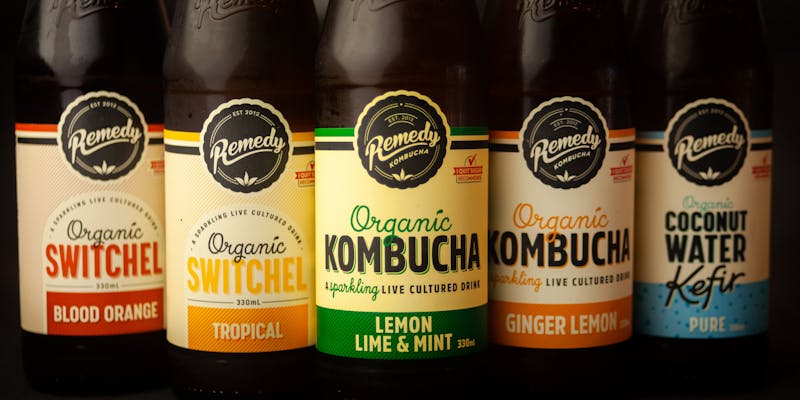How Can You Treat Hypertrophic Scars Effectively?
Nov 03, 2024 By Madison Evans
Hypertrophic scars are raised, thickened areas of skin that form as a part of the healing process after an injury. In contrast to keloid scars, the latter does not exceed the border of the basic abrasion. It may become red and itchy and sometimes painful and may erode the physical appearance as well as the self-esteem of a person. Fortunately, several treatments can be offered to manage and minimize Hypertrophic Scars. Lets discuss it!
What are Hypertrophic Scars?
Keloid scars result when there is extra production of collagen after tissue injury. It results in a heightened scar that could take several months or years to reach maturation. First of all, they may look red and swollen. As the weeks and months pass, they may either remain or become flatter and lighter.
Characteristics of Hypertrophic Scars:
Raised Texture: They are usually projected beyond the contour of the skin.
Color Changes: Formerly red or pink, they are painted white after some time may just be because of the change in pigmentation.
Location: They can occur in any area of the body but are usually found in zones with tension or muscle activities.
Itching or Pain: A number of people may feel some discomfort arising from hypertrophic scars.
It is important for a healthcare provider to know these characteristics in order to enable him or her to manage a client effectively.
Treatment Options for Hypertrophic Scars

1. Corticosteroid Injections
Surgery as noted earlier is the last option of treatment while corticosteroid injection is one of the initial treatment options to be recommended in the treatment of hypertrophic scar. Such injections act by decreasing inflammation and synthesis of collagen in the scar tissue.
How It Works: The steroid is injected directly into the scar every few weeks. This helps flatten and soften the scar over time.
Effectiveness: Many patients see improvement after several sessions, but there is a limit to how often this treatment can be done to avoid weakening surrounding tissue.
2. Silicone Gel Sheets
Silicone gel sheets are a non-invasive option that has proven effective in managing hypertrophic scars.
Application: These sheets should be applied to the scar for 12 to 24 hours a day for several months. They help keep the scar hydrated, which is crucial for healing.
Benefits: Silicone sheets can reduce scar height and improve texture while also preventing new hypertrophic scars from forming after surgery or injury.
3. Laser Therapy
Laser therapy is another popular treatment for hypertrophic scars. It utilizes focused light energy to target scar tissue.
Types of Lasers:
Pulsed Dye Laser: Effective in reducing redness and improving texture.
Nd:YAG Laser: Helps in flattening raised scars and improving overall appearance.
Results: Many patients experience significant improvement after multiple sessions, especially if treated early in the scar's development.
4. Dermabrasion
Dermabrasion is a surgical procedure that involves removing the top layers of skin.
Procedure: A rotating brush or diamond wheel is used to smooth out the surface of the scar.
Combination Therapy: When combined with corticosteroid injections, dermabrasion can enhance results by further flattening hypertrophic scars.
5. Compression Therapy
Compression therapy involves applying consistent pressure to the scar area using specialized garments or bandages.
Purpose: This method helps flatten the scar and reduces blood flow to the area, which can minimize collagen production.
Duration: It is essential to wear compression garments consistently for several months for optimal results.
6. Cryotherapy
Cryotherapy involves freezing the scar tissue using liquid nitrogen.
Effectiveness: This method has been shown to flatten hypertrophic scars effectively and is often combined with other treatments like corticosteroid injections for enhanced results.
7. Surgical Excision
It has been also mentioned that occasional application of surgical treatment is possible in case of no positive outcome with other forms of intervention.
Procedure: The hypertrophic scar is excised and the wound is sutured again all the time. It intends to remind the body to heal the cut while at the same time avoiding the formation of frightening keloids.
Considerations: There is always certain danger implied by surgery, including the possible reappearance of scar tissue, which is why it should not be entered into lightly.
8. Other Topical Treatments
Several topical treatments may also help reduce hypertrophic scars:
Onion Extract Creams (e.g., Mederma): These products have been labeled as scar creams that enhance the look of a scar through the provision of natural compounds.
Bio-Oil: Offered for numerous skin issues, it seems to catapult scar healing in the skin treatment area.
Heparin Gel and Bleomycin: These options hold potential for success but there is a need for more study as to their viability.
Preventive Measures

It is of course always better to try to prevent the hypertrophic scars from forming in the first instance. Here are some strategies:
Proper Wound Care: The wound should be cleaned and sued care after being inflicted to reduce chances of infection.
Silicone Sheets Post-Surgery: Silicone sheeting covering the area following operations or other procedures can lower scar formation potential greatly.
Corticosteroid Injections Early On: It is presumed that administration of corticosteroids proximal to surgical intervention may prevent the overproduction of collagen and hence, one type of excessive scar.
Avoid Tension on Wounds: It was discovered that preventing stress on wounds while they are healing goes a long way in preventing the development of hypertrophic scars.
Final Words
It sometimes comes with physical stress and being able to deal with it emotionally can also be very difficult. Yet, there are many treatments that exist to make their appearance manageable effectively. Starting from corticosteroid injections and silicone sheets up to laser therapy and surgical excision, people have options according to their needs.
To get the right solution on the matter it is recommended that one pays a visit to their doctor or dermatologist who majors in the management of scars that one may have. In most cases, patients seek help for hypertrophic scarring in order to regain their skin aesthetics, and ultimately have a better quality of life, once treated adequately.
On this page
What are Hypertrophic Scars? Characteristics of Hypertrophic Scars: Treatment Options for Hypertrophic Scars 1. Corticosteroid Injections 2. Silicone Gel Sheets 3. Laser Therapy Types of Lasers: 4. Dermabrasion 5. Compression Therapy 6. Cryotherapy 7. Surgical Excision 8. Other Topical Treatments Preventive Measures Final WordsHome Gardening Made Easy: Benalla’s Guide to Growing Your Own Produce

Exercise for Older Adults - Navigating Chronic Conditions

Fitness Hacks, Recommended By Personal Trainers:

The Impact of Weighted Hula Hoops: Are they Effective and Safe?

4 Most Related Emotions Cause Overeating and What to Replace Emotional Eating with

Eating Right for Eczema: Best and Worst Foods Revealed

Cinnamon and Weight Loss: Exploring Myth and Reality

Nausea After A Workout: Causes, Remedies, And Prevention

Kombucha: 5 Powerful Health Benefits of This Probiotic-Rich Beverage

An Overview of Fitness Trends: Navigating a Healthier Tomorrow

A Possible Reasons For Always Feeling Tired And Their Impacts
